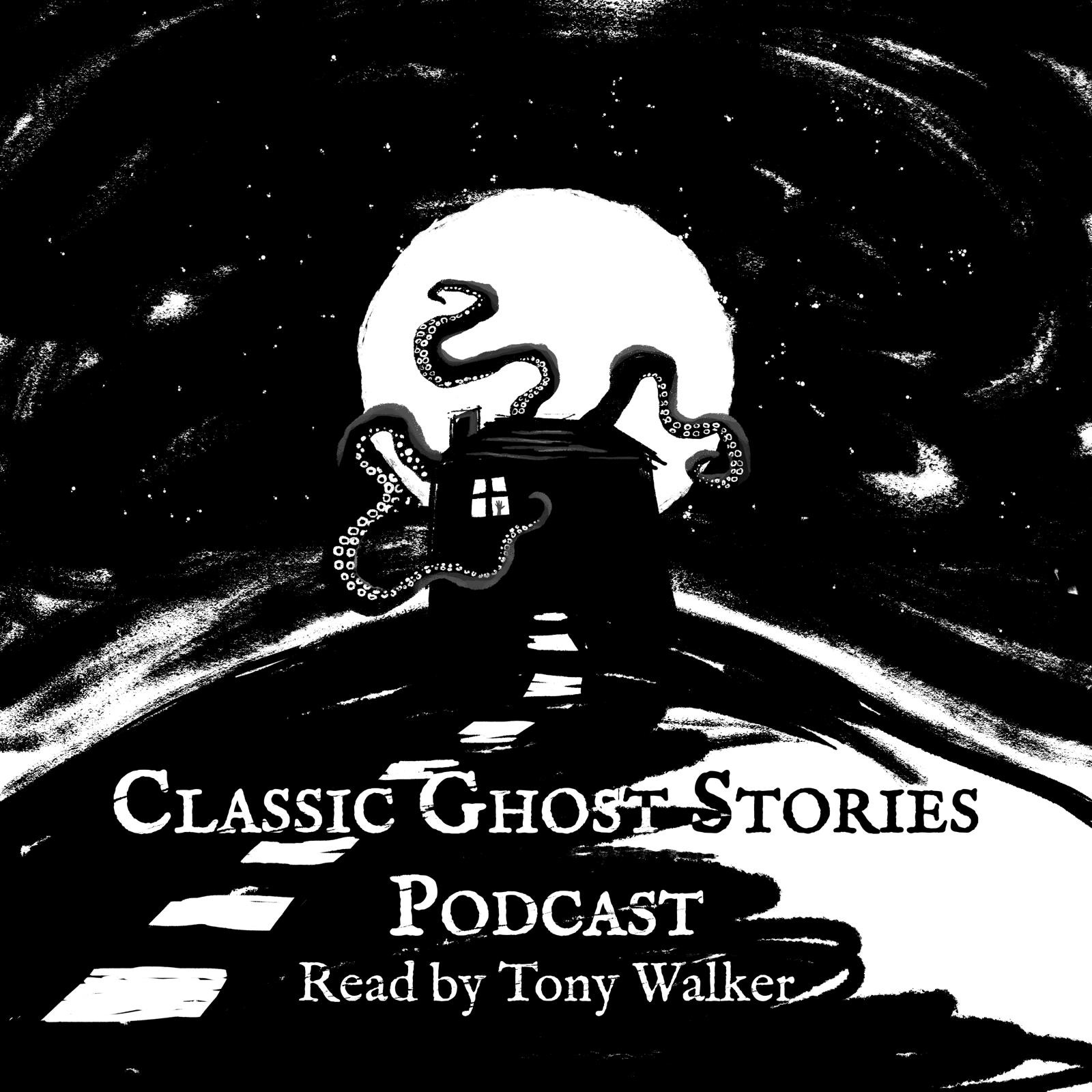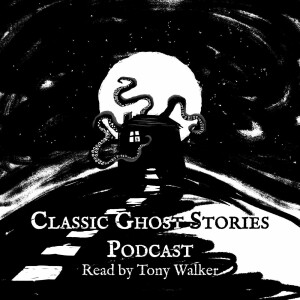
Oke of Oakhurst by Vernon Lee
Vernon Lee
Despite sounding so masculine, Vernon Lee was actually a woman called Violet Paget, born in France in 1856 and died in Italy in 1935. Despite these location she identified as English. Her biographer Vineta Colby says that Lee was English by nationality, French by an accident of birth and Italian by choice.
As well as the ghost stories for which she is most famous, Vernon Lee, was an essayist who wrote about travel and art and especially aesthetics.
Her parents were globe-trotting, or at least Europe-trotting intellectuals and in 1873, when Vernon or Violet was 17, they settled in Florence Italy. She stayed living in the vicinity of Florence until her death in 1935.
Violet published her first collection of essays when she was 24. These dealt with Italian writers and dramatists and she later wrote on William Shakespeare and Renaissance Italy.
She made fun of English artists, particularly the Pre-Raphaelites in her 1884 novel Mrs Brown.
Politically, she was a convinced pacificst. She published under a masculine name because she feared that as a woman her writing would not be taken seriously. She was a feminist and mostly dressed as a man. Though she didn’t come out, she did have crushes on women and was probably Lesbian. She suffered from health anxiety.
She also fell out with other writers by making fun of them in her work; notably Henry James and Edith Wharton.
Henry James wrote to his equally talented brother William warning him about Vernon Lee: the most able mind in Florence, ‘as dangerous and uncanny as she is intelligent.’
Oke of Oakhurst
In Part 1, the story begins with our narrator, the artist, talking to an unknown interlocutor about a painting assignment he had. He begins to talk about the wonderful and strange Mrs Alice Oke of Oakhurst, Kent. We learn that the stay with the Okes left an indelible impression on the painter, whose name I have not yet learned.
We get the impression that the Okes are gone, possibly dead. Certainly, he will never be able to paint her. Some disaster has fallen. The painter painted the husband and the wife and he has no idea who know owns the portrait of Mr Oke. This suggests their home has been broken up as if in some terrible fate has befallen them.
He didn’t even finish the portrait of Mrs Oke. Vernon Lee withholds information to whet our appetite. She creates suspense.
“I suppose the newspapers were full of it at the time.”
So it was a scandal.
“It really was stranger than anyone could have guessed.”
Alice Oke is dead and her end was strange, but fitting. Lee tantalises us all the way. She was sent to our painter from heaven, “or the other place.”
Who is this woman!?? I want to know.
The narrator doesn’t normally retell the story, but luckily for us, he chooses to on this occasion.
Lee paints a very sympathetic picture of Mr Oke, very much in awe of his wife, but a decent sort and not without feelings and sensitivities. But she sets him up through the painter’s eyes as the very antithesis of what the London Bohemian painter would admire. The painter sets off presuming Oke is the dullest of the dull, the very pinnacle of boring Tory county life.
He had been a lieutenant in the Blues which is a nickname of the Royal Horseguards, a prestigious cavalry regiment in the British Army who had been, as its name suggests a royal bodyguard.
In part 2 we get the background to Mr Oke. The painter is very disparaging. He portrays Oke as a dull young Kentish Tory with no imagination and no style. He refers to him as a ‘squireen’ (which my spellcheck prefers to render as ‘squirrel’) I guess this is a pejorative diminutive of ‘squire’ with the Irish -een added.
She comments on Mr Oke’s frown: “A Maniac Frown”. Vernon Lee mentions this twice.
We learn at the beginning that Mrs Oke is extremely desirous of having her portrait painted by this particular painter after seeing his work at the academy. Later we learn that Mrs Oke is fascinated by the portrait of her ancestor and even dresses like the 16th Century woman to make the resemblance greater.
Wanting her portrait painted seems therefore to be connected.
Our painter is disgusted with himself at accepting the commission at first. This is out of pure artistic snobbery. He imagines the Okes boring and conservative, not like his own charmed artistic circle.
Vernon Lee is a great descriptive writer. The description of the damp sheep sheltering from the rain under the oaks in the grounds of Oke’s Manor House are splendid, as are the descriptions of the house itself—very poetic and evocative.
The scene where he sits in the room listening to the clock as the twilight grows around him in the room hung with tapestries is truly wonderful.
.
Young Mr Oke isn’t allowed to have children. He is such a good-natured slave to his wife that I felt sorry for him in his simple, if dull, decency.
On the other hand, Mrs Oke, so far, appears a pure narcissist, taking no interest in anyone but herself.
Towards the end they mention ghosts. There appears no real reason to mention ghosts and it is in passing. But Oke comments that if they do exist they should not be taken lightly as God must intend them as a warning or a punishment. Then he changes the subject. The ghosts are mentioned close to the naughty ancestor Okes (the lady has Pomfret blood of course and they are self-seekers). So we presume a connection.
I bet this is foreshadowing
So we end at the end of Part 3, some 45 minutes in, on a suitable cliff-hanger, our appetite whetted.
Paid Substack
For those of you on the free substack, you are very welcome to this work, but it you come over to the paid membership you get exclusive stories! Imagine that! And you enable me to keep producing content. Grateful if you could consider it.
This is a public episode. If you’d like to discuss this with other subscribers or get access to bonus episodes, visit tonywalker.substack.com/subscribe
More Episodes
 2022-02-19
2022-02-19
 2022-02-12
2022-02-12
 2022-02-12
2022-02-12
 2022-02-12
2022-02-12
 2022-01-02
2022-01-02
 2021-12-20
2021-12-20
 2021-12-11
2021-12-11
 2021-11-30
2021-11-30
 2021-11-28
2021-11-28
 2021-11-22
2021-11-22
 2021-09-13
2021-09-13
 2021-09-11
2021-09-11
 2021-09-08
2021-09-08
 2021-08-30
2021-08-30
 2021-08-26
2021-08-26
 2021-08-23
2021-08-23
 2021-08-19
2021-08-19
 2021-08-06
2021-08-06
 2021-07-18
2021-07-18
Create your
podcast in
minutes
- Full-featured podcast site
- Unlimited storage and bandwidth
- Comprehensive podcast stats
- Distribute to Apple Podcasts, Spotify, and more
- Make money with your podcast
It is Free
- Privacy Policy
- Cookie Policy
- Terms of Use
- Consent Preferences
- Copyright © 2015-2024 Podbean.com






